Author Katharine Smyth Explores Grief and Family with the Help of Virginia Woolf
February 01, 2019 | Filed in: Woman of the Week
“I believe our favorite books help us make sense of our lives,” says author Katharine Smyth, whose new memoir, All the Lives We Ever Lived, tells her own family’s story through the lens of her favorite book, Virginia Woolf’s To the Lighthouse. Katharine’s late father—a witty, well-read architect—was her hero. He was also a troubled alcoholic. Katharine was just 25 when he died of cancer. In the decade that followed, she wrote a book that speaks to family, home, grief, growing up, and our evolving sense of who our parents really are. Here, Katharine talks about finally owning the word “writer,” overcoming a near-fatal accident, and the vital importance of Earl Grey tea.
MY FAMILY WAS A LITTLE ISLAND. I grew up in Boston, but my dad was English and my mom is Australian. I was an only child, and we didn’t have any other family in the U.S. Our summer house in Rhode Island was—and still is—the place I feel most at home. I went to college at Brown, and I spent a year studying abroad at Oxford in England, which is where I first “met” Virginia Woolf, so to speak. I had read a few of her essays, but that was the first year that she really spoke to me. Back at Brown, I ended up writing my honors thesis on Mrs. Dalloway and To the Lighthouse.
AFTER SCHOOL, I MOVED TO NEW YORK CITY and worked in an art gallery, but I knew that was not ultimately where I wanted to be. I always abstractly wanted to be a writer, but I didn’t know what kind. Next, I got a job as an editorial assistant at The Paris Review. At the same time, my then-boyfriend was applying to get his MFA in fiction, and I thought, That seems like a good idea. I applied to creative nonfiction programs and got into Columbia.
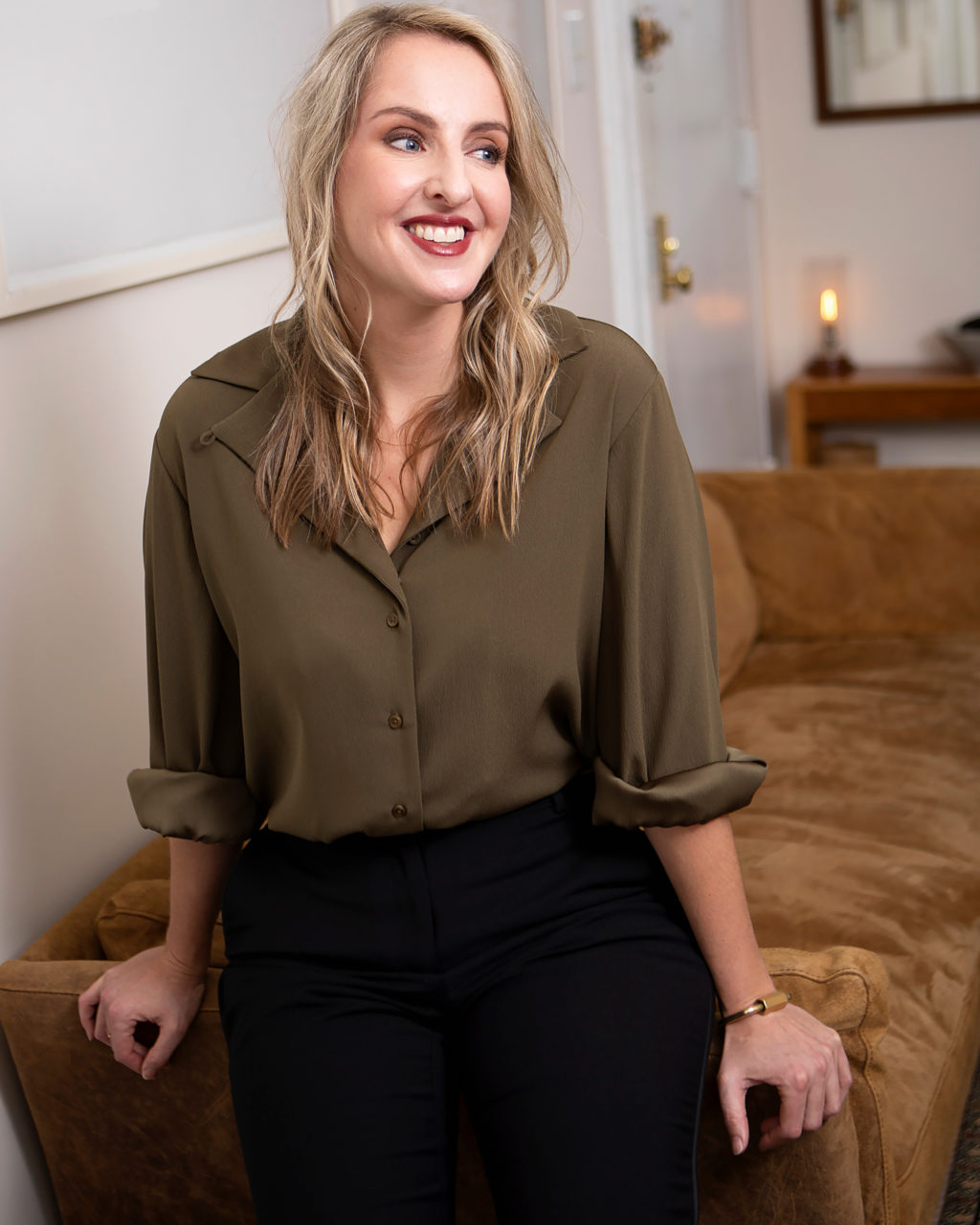
Katharine wears the Lorna top, Abbot trouser, and Wide Strap belt.
IT FELT WONDERFUL TO BE BACK IN SCHOOL. I was using my brain in a way that I hadn’t for two years. When you get an MFA, they don’t necessarily teach you anything you couldn’t figure out on your own, but they condense the process. What might have taken me 10 years to learn by myself was accomplished in just two. I learned how to frame and shape a story, and I learned the power of omission—what you leave out is just as important as what you put in.
MY DAD’S CANCER CAME BACK at the end of my first semester of grad school. He’d had it since I was 11, but he had been in remission for a few years. I initially resisted the idea of writing about my family because I thought it would seem either boring or sordid. I was nervous about telling a “dysfunctional family story.” But when my father died at the beginning of my final semester, he was very much who I wanted to write about. I wanted to get him on the page. That became my master’s thesis, and I hoped it would ultimately be a book.
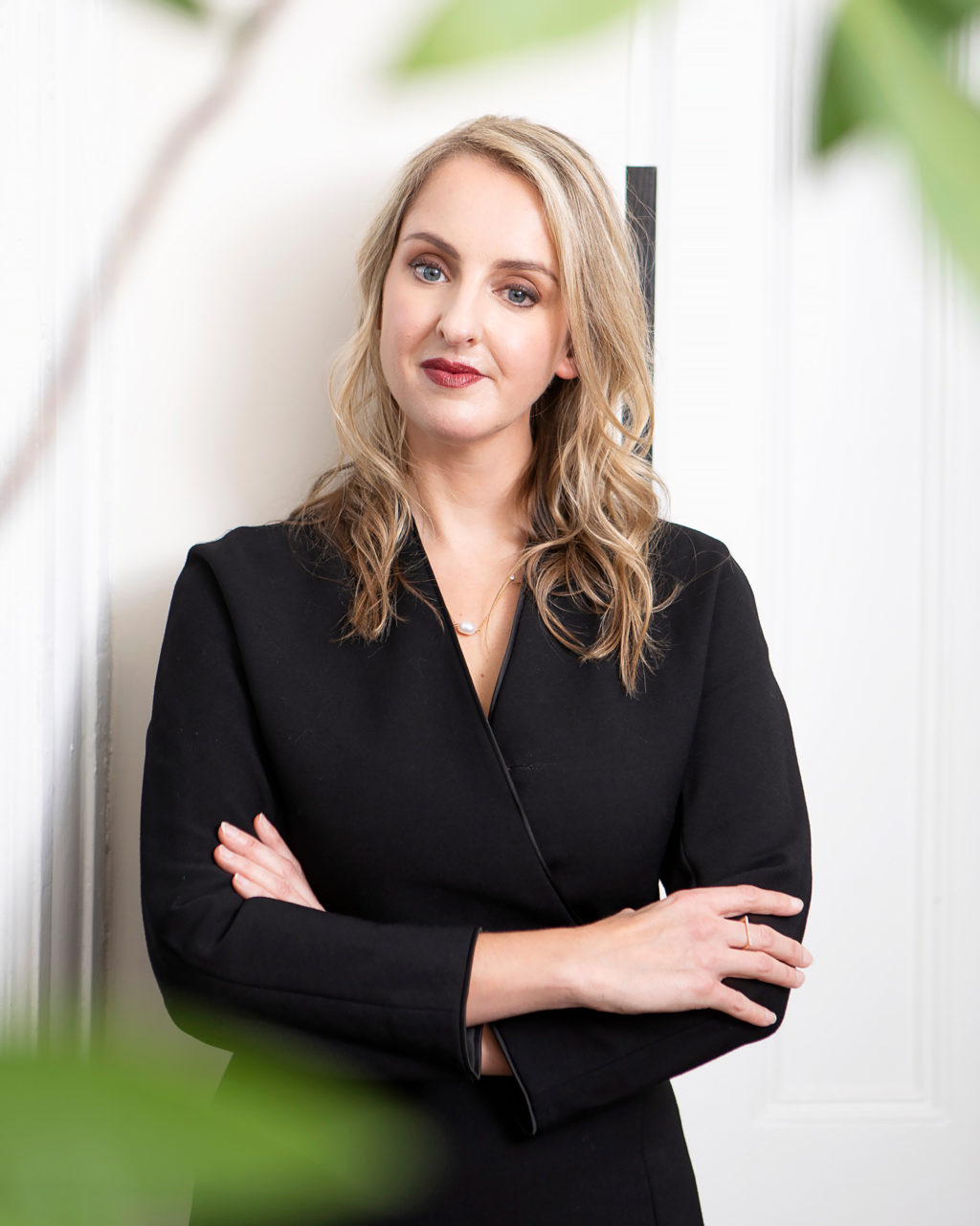
Katharine wears the Pamela dress, the Matte Satin belt, and the Ginger pumps.
THE REALITY OF GRIEF WAS NOT AT ALL WHAT I EXPECTED. I thought I would be totally felled by it. My dad had cancer for much of my life, and his death was something I had feared for 14 years. I thought it was going to be the worst thing in the world. When it finally happened, it was so chaotic and dull and oddly not that bad—just kind of dissatisfying. There are a lot of clichés around grief and the way we’re supposed to respond to loss. In my writing, I wanted to present a more nuanced lens on it.
I NEVER MANAGED TO SELL THAT FIRST DRAFT of the book. Publishers all said, “This is not sellable because you’re not famous and your dad’s not famous.” My agent thought I needed more of a hook. I thought, Hm, I don’t know anything about anything—except Virginia Woolf. I had always felt such a strong connection to her. In that moment, I realized all the themes I had been writing about—houses, the meaning of home, losing your favorite parent, failure, loss, grief, marriage—were exactly what To the Lighthouse is about. So I realized that book could be a kind of cradle for my own story, and I wrote a new proposal under that premise.
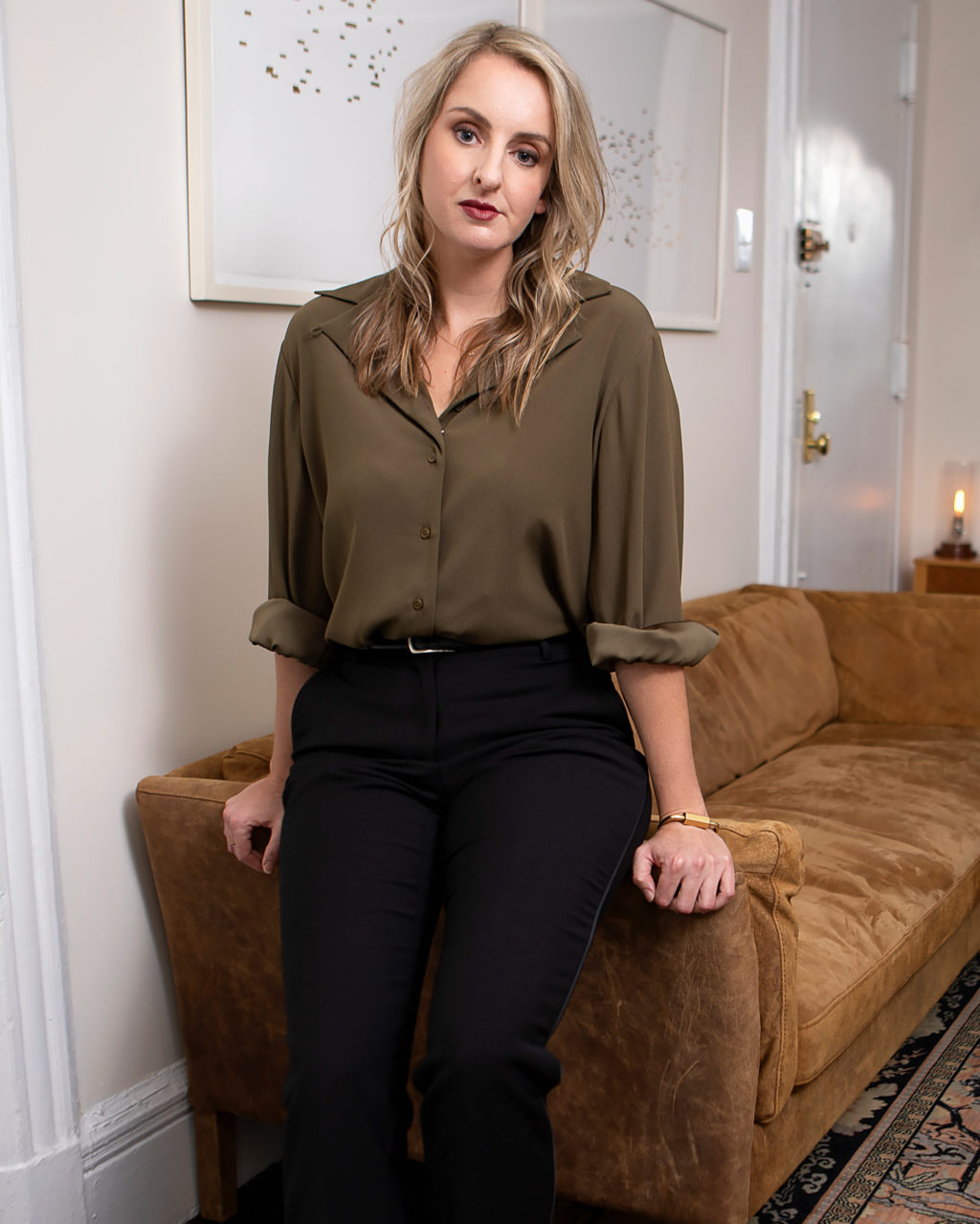
Katharine wears the Lorna top, Abbot trouser, and Wide Strap belt.
THE DAY I GOT MY BOOK DEAL, I ALSO BROKE MY NECK. I got an email at 5 P.M. saying the book had sold, and I was so happy. I’d gone through a fairly difficult divorce about a year earlier, and I remember thinking, My luck is changing! That night, I went to a friend’s birthday party, and everyone was so excited for me. I actually felt bad, as though I were taking attention away from my friend whose birthday it was. On my way home, the car I was in hit a sanitation truck and then veered across the road and hit an oncoming ambulance.
I HAD MANY INJURIES: I broke my wrist, lacerated my scalp and knee, and broke my neck in three places, including a burst fracture to the C1 vertabra, which typically results in death or paralysis. It was a strange time. I kept thinking about Mrs. Ramsay saying life was “terrible, hostile, and quick to pounce on you if you give it a chance.” I was in a neck brace for nearly five months, but I started to work on the book about four months after the accident, and I finished it in a year.
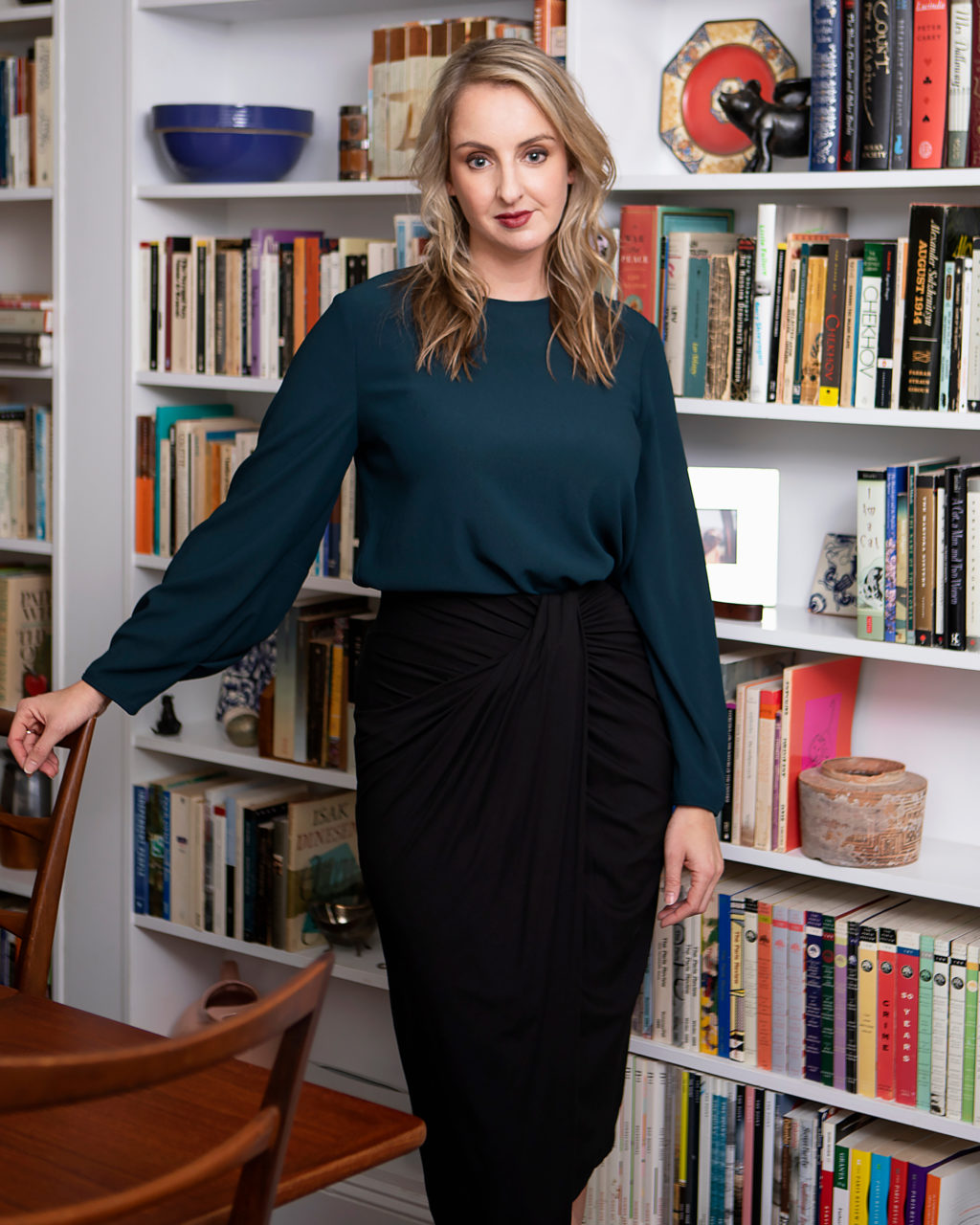
Katharine wears the Carrie top, Dorchester skirt, and Ginger pump.
WHEN YOU SAY YOU’RE A WRITER, the first thing people ask is, “Oh, what have you published?” And then you have to respond, “Nothing!” This book took 10 years to come to fruition. In that time, I taught and edited to make money, but I didn’t have any major work to show. I would say, “I’m a writer… I guess?” Having the book come out has been tremendously affirming. In a way, that’s a pity. I think anybody who writes—regardless of publication status—should be able to say they’re a writer. But I found it hard to claim that identity until recently.
I LOVE SLEEPING and never set an alarm, but I am most productive in the morning. I wake up around 9 A.M. and make tea. Earl Grey is a huge part of my life. I have the opposite of ADD; I can just sit down and focus for eight hours. I stop for lunch around 1:30—usually two soft-boiled eggs and an avocado with feta and lemon. And then I work until about 5:30 or 6. Once in a while, I will go to my house in Rhode Island and have these multi-week crazy hermit periods where I just write and don’t see other humans. Just me and my two cats (I couldn’t do it without them).
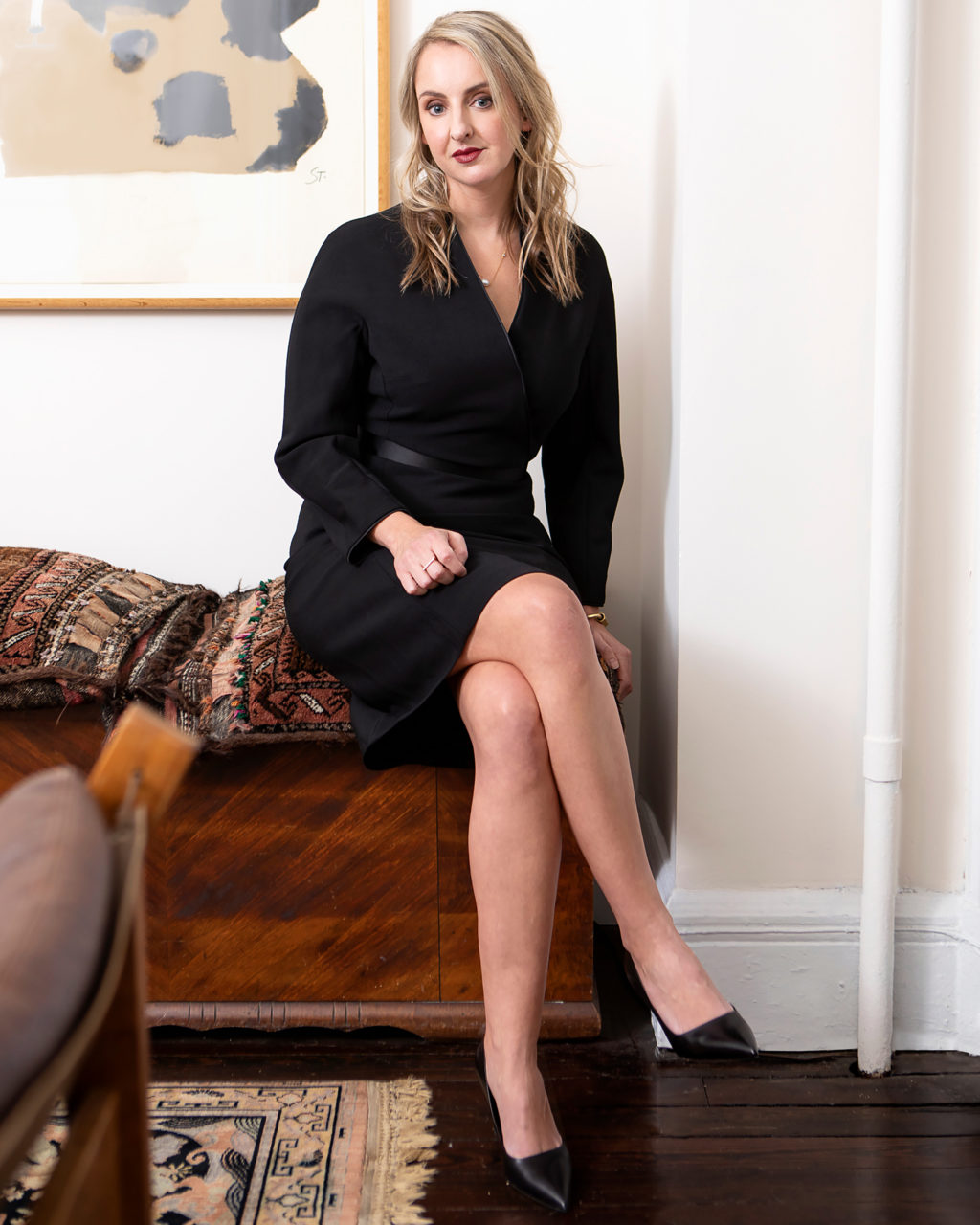
Katharine wears the Pamela dress, the Matte Satin belt, and the Ginger pumps.
THERE’S A REAL HOLE IN MY WARDROBE between casual clothes and cocktail party clothes. I’m not one of those people who works in pajamas. I do get dressed every day, which feels important—like, “My bra is on, so it’s time to work.” But I almost always wear jeans. When you’re working on a book, people sort of forget about you. Professional meetings are few and far between. This fall, I finally went to a meeting with my editor, publicist, and agent, and realized I was underdressed. Now that the book is coming out, I need to find a happy medium between looking nice enough but not too fancy.
I STRUGGLE WITH THE FACT THAT I’M EXPOSING SO MUCH about my family in this memoir. My mother is a private person, and there are probably certain scenes that she would much prefer are not out in the open. But on the other hand, I think memoirs that pull their punches, where the writer is trying to protect other people, are a little unsatisfying. What’s the point? Why tell the story if you’re not going to tell it as truthfully as possible?
MY DAD ALWAYS SEEMED LIKE A GOD TO ME, and my book explores what happens when we encounter who our parents are as complete human beings. When I was doing my research, I found out that he’d been seeing another woman when he was engaged to my mother. It wasn’t an affair—they had an open relationship at the time. But I never knew about it, and it surprised me. In writing this book, I set out to know my father. But the more I tried to know him, the more he seemed to recede. He’s no longer exactly the person that I thought I knew. Still, working on this project was such a privilege—it was like getting to spend time with him again.
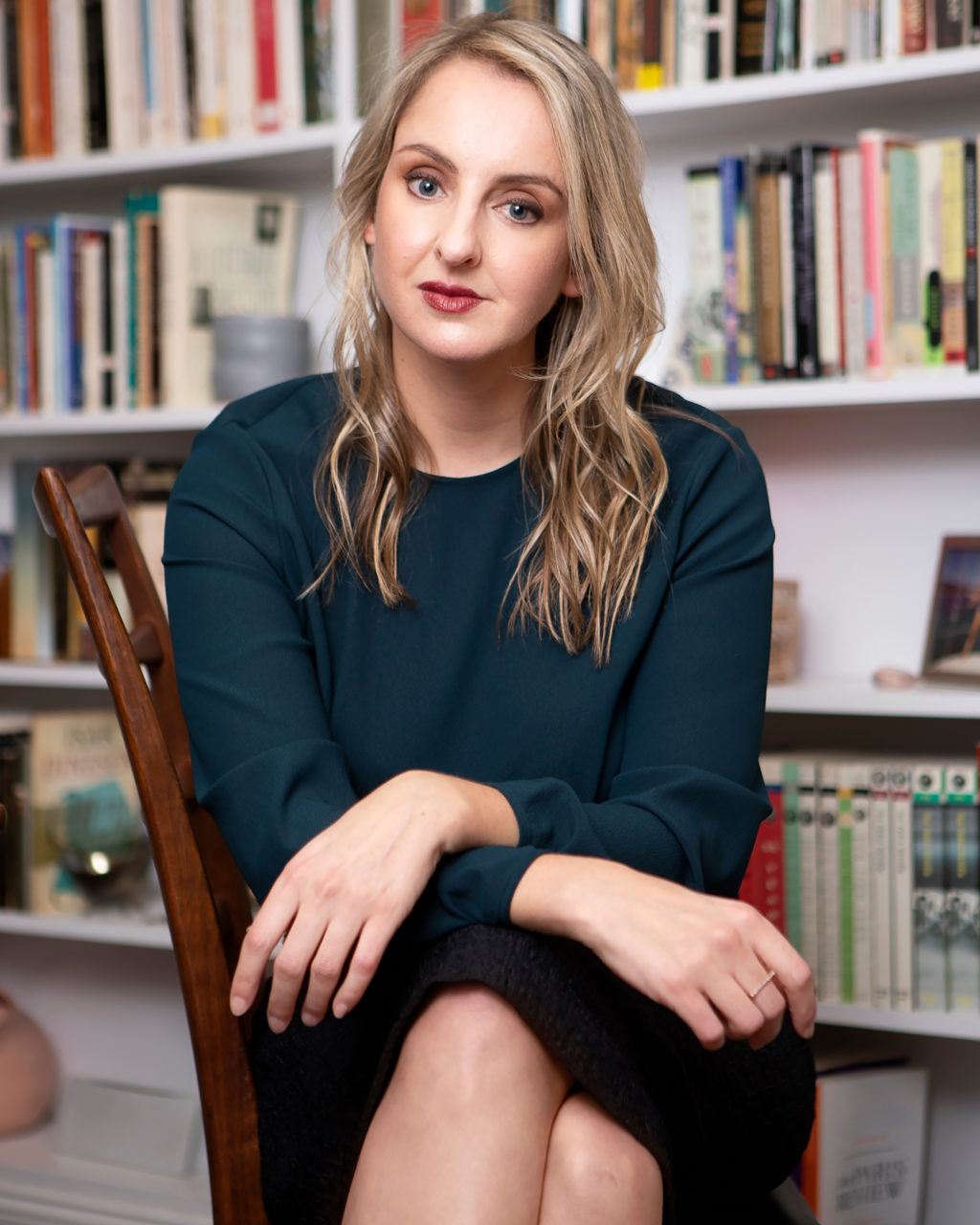
Katharine wears the Carrie top, Dorchester skirt, and Ginger pump.
Photography by Sara Kerens. Styling by Sam Michel.





